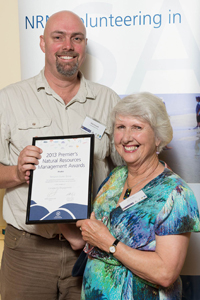Tennyson Dunes Group
A group of people concerned for the future of the Tennyson Dunes formed the Tennyson Dunes Group in 1995 as a volunteer coastcare organisation. The group meets regularly in an effort to protect the Tennyson Dunes by restoring native habitats and minimising threats against them.
Activities undertaken by the Tennyson Dunes Group include animal and plant surveys, collection and propagation of locally native plant seed, revegetation, weed and feral animal control and community education through designing interpretive signs and conducting tours and presentations. The group is complemented by the West Lakes Kiwanis who construct and maintain fences, signage and the viewing platform. Both Natural Resources Adelaide and Mt Lofty Ranges and the City of Charles Sturt provide invaluable support to the group and the Tennyson Dunes.
Our work is guided by the Tennyson Dunes Biodiversity Action Plan, so that we have a coordinated approach with Natural Resources AMLR.

If you would like to find out more about either the group or the Tennyson Dunes themselves, please email us.